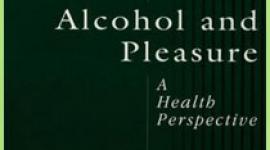How to Treat Coexistent Mental Illness and Substance Abuse
ABSTRACT: Integration of mental illness and substance abuse treatments is important for patients with dual diagnosis, the coexistence of an emotional ailment and a chemical dependency. Such comorbidity is usually associated with a poor prognosis. Both disorders require appropriate therapy so that remission of psychiatric symptoms and maintenance of sobriety become reachable goals for these individuals. A joint therapeutic approach improves outcome, functional expectation, and community adjustment.
 COEXISTENCE of mental illness and a substance abuse disorder known as dual diagnosis vastly compromises management of both conditions. The lifetime prevalence rate for psychiatric conditions is 22.5% in the general population, and 19.6% of people have a chemical dependence; having both at the same time occurs in approximately one third of people with either of these conditions. Comorbidity results in an outcome much worse than when only one of these conditions is present.
COEXISTENCE of mental illness and a substance abuse disorder known as dual diagnosis vastly compromises management of both conditions. The lifetime prevalence rate for psychiatric conditions is 22.5% in the general population, and 19.6% of people have a chemical dependence; having both at the same time occurs in approximately one third of people with either of these conditions. Comorbidity results in an outcome much worse than when only one of these conditions is present.
Managing both aspects of the dual diagnosis conjointly can be advantageous. The core treatment provides an opportunity to approach both illnesses at the same time. Staff members are trained to assess and treat these problems in a unified way. The therapeutic team can integrate within the program the knowledge and skill needed to treat both disorders and lessen the patient's denial of either entity.
In addition, prognosis for improvement in each of these disorders is enhanced by treatment of the other condition. Physicians, other clinicians, and health care planners document benefit from an integrated, therapeutic method versus an isolated approach to each ailment separately. For example, a patient with severe mental illness and alcoholism could derive significant improvement in psychologic symptoms by avoiding intoxication; in the same manner, control over a component of psychiatric illness would help an emotionally compromised drug addict attain sobriety. Compliance with prescribed treatment and adherence to follow-up is greatly improved when both aspects of the problem are attended. One study assessing the 4-year outcome of patients with mental illness treated in a dual diagnosis program showed a 61% remission from alcohol abuse.
Dichotomous, suboptimal care is sometimes the result of poor coordination of therapeutic services by mental health agencies and substance abuse centers. Some individuals with either one of these ailments are barred from treatment facilities that focus on the other condition, leaving them in a gap between these two disciplines.2,4 Because they are difficult to treat, people with chemical addictions and mental illnesses are excluded from care by some clinicians. Differences in treatment philosophy or mistrust between professionals can lead to barriers between the psychiatric, general medical, and addiction treatment teams, exaggerating the already negative effects on recovery rates.3 On the other hand, a comprehensive, dual diagnosis approach to both types of illness from the beginning potentially improves the prognosis.
Careful diagnostic evaluation in dual diagnosis cases offers important prognostic and treatment implications. More severe psychiatric disorders indicate worse outcomes.5 The prognosis for patients with psychiatric disorders is typically poorer with accompanying substance abuse than without such problems. For individuals with chemical dependence, the best predictor of improvement is a lessening in severity of concomitant psychiatric symptoms.5 Improved mental status has a positive impact on the addiction remission potential.
TREATMENT METHODS
Central State Hospital in Louisville, Ky, has a dual diagnosis treatment unit. Admission criteria for this section of the hospital include patient motivation with a comorbid, major psychiatric disorder and substance abuse. Exclusions include persons who are medically unstable or require one to one personal psychiatric supervision, those who are unable to comprehend educational material or participate in group and milieu offerings, and those whose behavior is uncontrolled to the point of exhibiting a high violence potential. The dual diagnosis staff screens applicants for admission on an elective basis, with primary focus on acceptance of chemically dependent individuals with motivation, who have the desire for sobriety and need for psychiatric treatment. Admission is denied to those not highly committed to the process of recovery.
A comprehensive history and physical examination are done on the day of admission.6 Appropriate laboratory studies are done. Feedback about the patient from family, a previous physician, or through other means greatly improves the evaluation. Assessment and observation of symptoms that could arise from either or both conditions help identify problems and direct therapy in the proper direction.1,4
Dual diagnosis treatment begins with the detoxification procedure, lasting a week or more, depending on the type and quantity of substances used. The detoxification period is also an opportune time to develop doctor-patient rapport and carefully assess the source of psychiatric manifestations, determining whether they are primary or induced by drug abuses.1 In this population, establishing a productive therapeutic alliance is critical to gaining trust and keeps the patient in the program. Psychiatric management follows a thorough evaluation of all signs, symptoms, and history. Routine psychiatric pharmacotherapies and/or electroconvulsive therapy are used as warranted by clinical indications. Psychotherapy, individual counseling, and group therapy are provided, as are educational and recreational activities.
Attendance at Alcoholics Anonymous (AA) meetings is expected. With its strong peer group involvement, AA is a potent factor in confronting denial. Patients are given the opportunity to initiate support from the community by choosing AA sponsors from people in recovery from chemical dependencies.7 Such contacts should be maintained through discharge from the inpatient program. These sponsors are an essential part of recovery, facilitating the individual's growth in the process of long-term rehabilitation by their counsel and regular interpersonal contact. Each individual receives support in this manner. They are instructed to choose as sponsors recovering individuals who have maintained steady recovery for at least 1 year. Finding enough local sponsors has never been a problem; many such people are willing to assist patients with dual diagnosis in their integration to the AA community.
Double Trouble is a new type of 12-step program8 for persons with both a psychiatric disorder and an addiction. Smaller than the traditional group, it provides stronger support and openness to its members. Double Trouble groups are available to our discharged patients.
Educational programs, film and discussion groups about drug abuse, family conferences, and sessions with chemical dependence counselors are other treatment modalities for people with these difficulties.1 Such activities are effective in rallying members of the immediate family to give full support not only to the program, but most of all to the patient, who at one time was alienated and lost credibility with family and friends.
SOCIAL THERAPIES
Self-help groups for people with chemical dependency are important therapeutic modalities. Patient education, psychotherapy, and similar rehabilitative offerings are also typical treatment methods.
Self-Help Groups
Alcoholics Anonymous meeting attendance is mandatory, 7 days per week. This actively confronts denial of the substance abuse problem, thus diminishing the major barrier to treatment in this population. The routine 12 steps of the AA format are the focus of therapy for chemical dependence.2-4,7 Group participation, with oral and written assignments, is part of this approach. Substance abuse counselors facilitate this procedure with concentration primarily directed toward AAÃs first three rehabilitation steps, (1) recognizing helplessness over addiction, (2) recognizing the possibilities for recovery, and (3) deciding to commit to the process of recovery.7,9
On discharge, regular AA meeting attendance and completion of all 12 AA steps are anticipated.7 Discussions about all the steps of therapy in AA are readily available in the literature; peer counseling regarding these steps may be the most effective remediation of a substance abuse disorder.7,10
Education and Counseling
Discussions, lectures, and films are incorporated into the program for the purpose of informing and teaching patients about the deleterious effects of substance abuse on themselves, as well as on their families, employment, and future. Counseling and group or individual psychotherapy play a pivotal role in the attitudinal change being encouraged.1,4 A personalized approach opens the door to involvement in the program. One-on-one teaching augments individual advancement in the process. Gaining insight on self-care and improving judgment are other goals.
Rehabilitation Suggestions
The program presents several options that are available to persons reforming their lives. Vocational rehabilitation services are vital. People devastated by long periods of psychiatric disability and/or addiction can greatly benefit socially from sobriety. They are extended the privilege of working for a few weeks through the state vocational rehabilitation services agency after completion of the inpatient program. The job, though short, increases self-esteem. The vocational rehabilitation services agency then directs the patient to a permanent job, further education, or other related activities.
Placement Plans
The purpose of placement is to assist patients in finding not only a safe place for continued drug-free life, but also one that encourages prolonged sobriety, stability, and well-being while maintaining appropriate psychiatric therapies. A good social support network is important; thus, halfway houses or day programs are made available, as well.
Discharge planning begins at admission. Available options are discussed, with the patient playing a significant part in the decision-making process. The failure or success of placement after discharge often depends on the choice made. Placement is as vital as the formal part of the program, since the choice made often predicts the prognosis. Outpatient follow-up care and a stable place in which to live are assured for all cases.
In our experience, people who opt for halfway house placement outside their community have a greater chance of staying sober for a longer time period. Given the occasion to start over, they begin a life-style conducive to recovery, as opposed to those who choose to stay in their community. Of course, relapse occurs in all groups. Patients who remain close to the AA community generally have a better sobriety success rate.
VARIABLES
Variables such as young children, parents, and spouses or significant others also determine choices and outcome. Problems or concerns in these areas affect the patient. Small children without day care, for example, present an obstacle that is at times insurmountable; some parents are therefore unable to join in the treatment program. Few halfway houses offer assistance to women with children. Unfortunately, many placement programs are not prepared to handle child care. Those that do focus on helping their residents to be responsible and accountable.
Some people benefit from court-ordered treatment; a program that works with the legal system can enforce rehabilitation via sentencing as required by law. A program such as the one we have outlined should provide gratifying results in a population that is difficult to treat.
Variations in management are individualized to the patient, medical team, and institution. Facilities have widely different philosophies about treatment, for example, concerning the value of total abstinence versus controlled drinking as a therapeutic goal or the use of pharmaceuticals such as disulfiram (Antabuse) or naltrexone (ReVia) as an aid to sobriety.1 Dual diagnosis programs such as ours are generally recognized as being successful, despite dealing with a notoriously relapse-prone patient population.
Joel Velasco, MD, Arthur Meyer, MD, and Steven Lippman, MD Louisville, Ky
References
1. Zimberg S: Introduction and general concepts of dual diagnosis. Dual Diagnosis: Evaluation, Treatment, Training and Program Development. Solomon J, Zimberg S, Shollar E (eds). New York, Plenum Press, 1993, pp 3-21
2. Miller NS: Addiction Psychiatry: Current Diagnosis and Treatment. New York, Wiley-Liss, 1995, pp 206-225
3. Minkoff K: Models for addiction treatment in psychiatric populations. Psychiatric Annals 1994; 24:412-417
4. Miller NS: Prevalence and treatment models for addiction in psychiatric populations. Psychiatric Annals 1994; 24:399-406
5. First M, Gladis M: Diagnosis and differential diagnosis of psychiatric and substance abuse disorder. Dual Diagnosis: Evaluation, Treatment, Training and Program Development. Solomon J, Zimberg S, Shollar E (eds). New York, Plenum Press, 1993, pp 23-37
6. Anthenelli RM: The initial evaluation of the dual diagnosis patient. Psychiatric Annals 1994; 24:407-411
7. Twelve Steps and Twelve Traditions. New York, Alcoholics Anonymous World Services Inc, 1993
8. Zaslav P: The role of self-help groups in the treatment of the dual diagnosis patient. Dual Diagnosis:Evaluation, Treatment, Training and Program Development. Solomon J, Zimberg S, Shollar E (eds). New York, Plenum Press, 1993, pp 105-126
9. Alcoholics Anonymous: The Story of How Many Thousands of Men and Women Have Recovered From Alcoholism. New York, Alcoholics Anonymous World Services Inc, 3rd Ed, 1976
10. Chappel J: Long-term recovery from alcoholism. Psychiatr Clin North Am 1993; 16:177-187
For the most comprehensive information about Depression, visit our Depression Community Center here, at HealthyPlace.com.
next: Substance Use and Abuse among Patients with Comorbid Dysthymia and Substance Disorder
~ addictions library articles
~ all addictions articles
APA Reference
Staff, H.
(2007, August 6). How to Treat Coexistent Mental Illness and Substance Abuse, HealthyPlace. Retrieved
on 2026, January 21 from https://www.healthyplace.com/addictions/articles/how-to-treat-coexistent-mental-illness-and-substance-abuse



